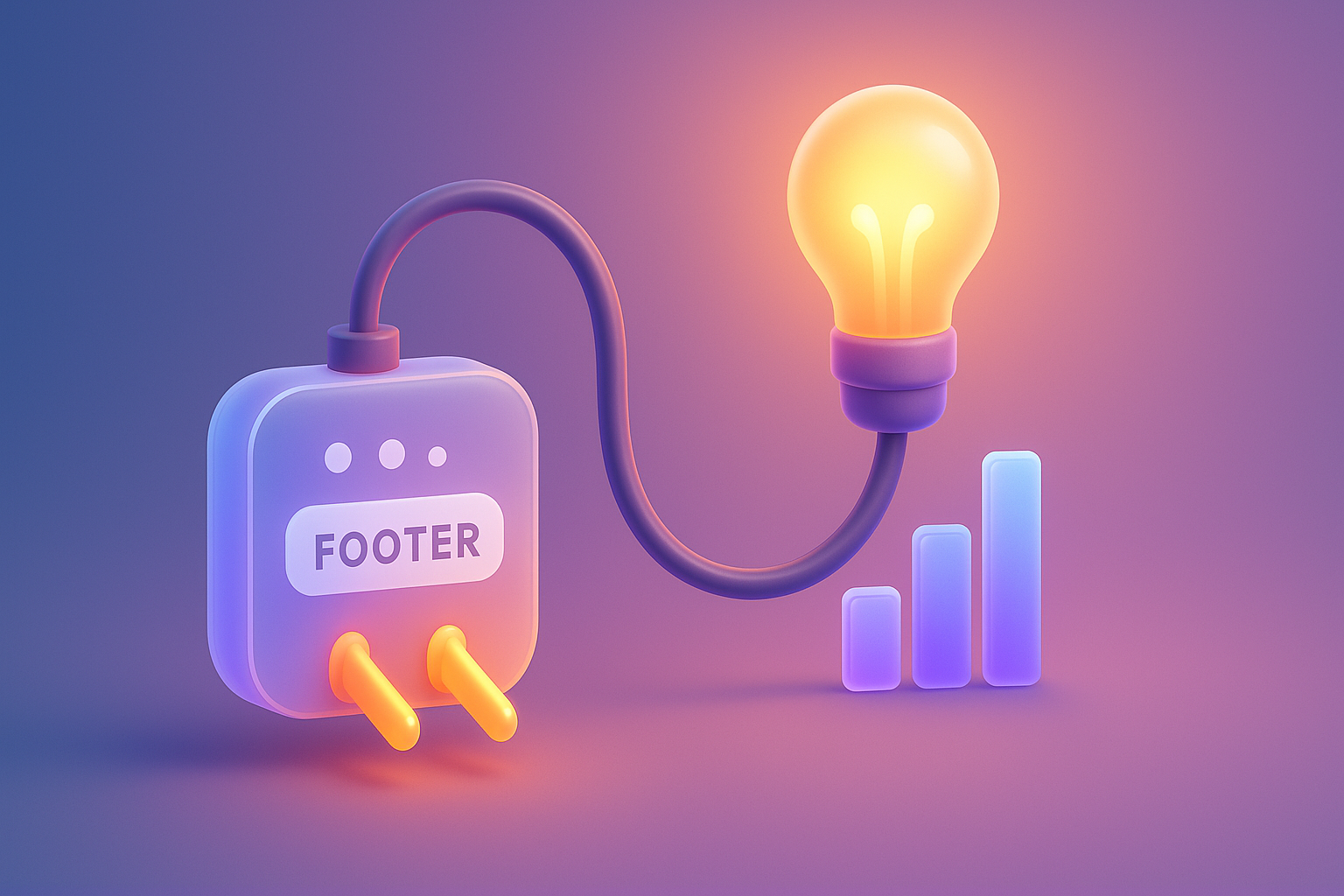What is "Composable Architecture"? And why Enterprise must pay attention.

The real problem in life
As an executive or decision maker in the Enterprise organization, have you ever felt this way? The marketing team wants to launch a new campaign with a feature on the exceptional website, but IT says "can't do" or "takes more than 6 months" because the back type that we use is all the same pieces (monolithic). It is like trying to pull the yarn out of the shirt that is already woven. If pulling the wrong point ... the shirt may be broken.
Or another classic situation: We would like to change the payment gateway or product management system (PIM) to provide a better experience to customers. But can't do it because of the "contract" or "technical limitations" of the All-in-One platform that we have chosen from the beginning. The dream to adapt to the competitors or create new innovations. Therefore became just a picture that was seen far But didn't reach once This is an uncomfortable that many large organizations are facing every day.
Prompt: A Dramatic, Cinematic Photo of A Giant, Rigid, Monolithic Block of Concrete with Visible Cracks, Symbolizing an Outdated Enterprise System. Sever Business Executives in Suits Are Standing Around IT, Looking Frustrated and Helpless, Unable to Move or Change IT. The Lighting is Low and Serious.
Why did that problem occur?
The main cause of slow and lack of flexibility Caused by the traditional system architecture called "Monolithic Architecture" . Imagine the prefabricated house that all parts have been created and attached to one piece since the factory. Whether it's a bedroom, kitchen, bathroom, or electrical system Everything is tied together. The advantage is that it may look complete and can be used immediately in the first phase. But over time ... if you want to smash the wall to expand the kitchen Or want to change all the new bathroom designs It will become a big deal immediately. Changes in small spots May affect the whole house Risk of damage And must use both time and enormous budget
The IT system of the Enterprise organization is no different. Whether the E-Commerce system, customer management system (CRM), or the main website of the organization Every function is created as a "one piece" that is big and complex (Tightly Coupled).
- Difficult to update or edit: Code only one line may have to test all the new systems (Full Redeployment) to ensure that it will not affect other parts.
- The introduction of new technology is possible: would like to try AI to help recommend the product. Or connected to Tiktok Shop? If the main platform does not support ... it is almost impossible.
- The "Vendor Lock-in": Tie in one service provider Causing us to lack the power to negotiate and cannot choose to use the best tools (Best-OF-Breed) for each job.
- High risk: If any part of the system falls May result in either the website or application, not all usable.
These problems are not the fault of anyone. But it is the limitation of technology in the past that was not designed to support the digital world that changed today. And this is the origin of the concept that will come to "liberate" your organization independently, that is Composable Architecture .
Prompt: an infographic-style Illustration comparing Twolding Structures. On the left, a "monolithic" Building, Solid and Inflexible. On the right, a "composable" Structure Made of Sleek, Modern, Interconnected Lego-Like Blocks, Each Labeled with Functions, "" SEARCH, "CMS," Etc., Swing the Can Addddddddddddddddddddddddddddddddddddddddddddd.
If left, how will it affect?
"Endure" with an outdated and lack of flexibility. Not just a matter of technical uncomfortable But it directly affects "Competition ability" and "growth" of the business in a long -term long -term. Imagine:
- Loss of business opportunities: while competitors can launch new products or services On digital channels within a few weeks Your organization may take a quarter or a year. This gap is the "opportunity" that you lost and may never return.
- Poor Customer Experience: Customers in this era expect fast, smooth and personal experience. (Personalized) in all channels. If your website is slow, complicated payment systems, or cannot provide connected experiences between online and offline. They are ready to turn to the competitors immediately without hesitation.
- Increasing Hidden Costs: Maintenance fees, year of License, and a large team wage to look after the complex monolithic system is the increasing cost. Contrary to the efficiency received
- Innovation became paralyzed: your team may be full of good ideas but "limited" with technology. Causing creativity to not actually happen The atmosphere in the work will lack motivation. And difficult to attract talented personnel (Talent) to be with the organization
Finally Not changing the architecture to be modern Is like trying to drive the "chariot" to compete in the "Formula 1" field, even if the driver is good There is no way to follow the competitors that drive in time. And this is the reason why leading organizations around the world are seriously heading to a new way.
Prompt: A Split-Screen Image. On the Left, A Customer on Their Phone Looking Angry at a Loading Screen with The Text "System Down for Maintenance." On the right, a Customer Smiling While Easily Making a Purchase on A Sleek, Fast-Loading Mobile Website. The Right Side is Brighter and More Vibrant.
Is there any solution? And where should it start?
Exit that are internationally accepted and widely mentioned by leading research companies like Gartner , which is a transition to Composable Architecture or "Draft architecture".
Instead of building a house in one piece, Composable Architecture is the idea of building a house using The modern "Lego", each standard is "Packaged Business Capabilities - PBCS) that is independent, such as content management systems (CMS), a basket system, payment system. Each" Lego "or a service will connect and talk through what is called API (Application Interface).
The heart of this concept was summarized in the principles of Mach Alliance , which consists of:
- M - Microservices: Application design, divided into sub -services That works independently, can develop, edit, and adjust the size (scale) separately without affecting other parts
- A - API -FIRST: Designs that focus on creating good API first So that all services can connect and exchange information smoothly and safely
- C - Cloud -Native: Creating and applying the full cloud service For maximum benefit in flexibility, scalability, and reliability
- H - Headless: The separation of the front of the house (Fronntd or "Head" which is a screen for customers to see) from the back home system that manages data and logic), allowing us to freely create experiences in the front of the house. Whether it's a website, Mobile App, Smartwatch or IoT devices using the same Backend. Headless Commerce is a clear example of this concept.
And where will it start?
- Audit Current System: Analyze the system you have. What is the most problematic part? Which part that needs the most flexibility?
- Starting from the part that does not affect the main axis: try to choose a small project first, such as creating Microsite for marketing campaigns using Headless CMS or changing search systems on the website to external services.
- Plan Roadmap: Set long -term targets to gradually "break down" the original monolithic system and replace it. How do Microservices one by one?
- Create a corporate culture that is ready to change: to educate the IT team and the business team about the benefits of Composable Architecture and promoting collaboration.
This transition is not all "dismantling" in one day. But is a gradual journey Beginning with the most painful point first This will help your organization see the benefits and create a larger movement. Bringing architecture that is driven by events (Event-Driven Architecture) for use Is another way that helps strengthen Your Composable architecture
Prompt: an Animated Infographic Video Thumbnail Showing The Four ICONS OF MACH (Microservices, API-FIRST, Cloud-Nation) Connecting Together Like Puzzle Pieces to Formic, Flexible Platform.
Examples from the real thing that used to be successful
In order to see more clearly Take a look at the example of "Global Retail Co.", a giant retail company with branches around the world. Which has experienced problems with the monolithic e-comical system that is both huge and has a high maintenance cost
The original problem (The Monolithic Trap): Their website is built on the All-in-one E-Commerce platform. The old model will add new promotions. Or adjust the design of the Homepage. Each time takes several weeks to develop and have to pass a complex test. The marketing team cannot respond to the trend of the market in a timely manner. During the big discount festival The website often falls because it cannot support enormous traffic. Resulting in loss of sales and destroying customer confidence
The mission to Composable (The Composable Journey): The executives decided to "liberate" themselves from the old system. Beginning with the use of Composable architecture, they do not immediately dismantle the old system. But starting with the "cover" the original system with API Gateway and gradually replaced one function:
- Unlock the front of the house (Headless): They choose to use modern platforms such as Webflow for all Frontent's creation and management, which gives freedom to the design team in the design, experimenting A/B Testing, and launching new campaigns. Own without having to wait for the IT department. Using the Webflow for Enterprise has proven to be able to answer this.
- Choose the best service. (Best-OF-Breed): They switched to search services from Algolia, content management systems (CMS) from contentful, and stripe payment systems by connecting all through the API.
- Create its own microservices: for unique business logic, such as membership management systems and reward points. They also developed into Microservices That works on a separate cloud
The Game-Changing Results: within 1 year after the Global Retail Co. project can reduce the launch of new features from "several months" for a few days. "The website can support the traffic during the promotion by 10 times without problems. And most importantly, the Conversion Rate has increased by more than 30% because it can provide more fast and direct experiences for customers. This is a proof of why the Enterprise business should switch to use flexible technology such as Webflow and Composable Architecture.
Prompt: A "Before and After" Diagram. The "Before" Side Shows A Tangled Mess of Wires Labeled "Monolithic E-Commerce." The "After" Side Shows a Clean, Organized Diagram with a Central "API HUB" Connecting to Logos of Modern Services Like Webflow, Algolia, Stripe, and Contenttive, Under The Title "SUCCESLOLL.
If wanting to follow, what to do? (Can be used immediately)
Starting the route to Composable Architecture may seem a big deal. But you can start immediately with this tangible checklist. To present and plan with your team:
Phase 1: Explore and strategy (1-3 months)
- [] Establish a special team (Tiger Team): pull people from IT, marketing, and business together to determine the vision and goals.
- [] The current system (Tech Audit): Make all the existing system plans. Specify which part is the "bottleneck" that creates the most problem (such as CMS system, checkout system, search system)
- [] Define the Pilot Project (Pilot Project): Choose the first project with a low risk, but clearly see the results, such as creating a landing page for new products using Headless CMS or changing the company's blog.
- [] Study and choose tools (tool selection): Began to look for service providers in each side that answers, such as the Fronttend (Webflow), Headless CMS (Contentful, Strapi), SEARCH (Algolia) etc.
Phase 2: Doing a pilot project (3-6 months)
- [] API design: Developing API that will be an intermediary in the new and existing service system.
- [] Develop and connection: Build a new Fronntd and connect to the service. Best-Off-Breed selected
- [] Test and measurement: Opened with the Beta Test and data collection to measure the results compared to the original system (such as Page Speed, Conversion Rate).
Phase 3: Expand and change (continuous)
- [] Communication of success: bring results from the pilot project to the executive. To build confidence and budget for expansion
- [] Place the Roadmap. MONOLITH: Prioritize "Cut" other functions. Leaving the old system as Microservices Or external services
- [] Create an internal knowledge: organize training and create a developer portal to make your team familiar with working on a new architecture.
Having a partner with expertise Website development advisor for organizations Will help this trip smooth and reduce the risk greatly
Prompt: A Clean, Modern Checklist or Roadmap Infographic with The Three Phases (Explore & Strategize, Pilot Project, Scale & Transform) and Their Key Action Points. Use Clear Icons for Each Point, Like a Magnifying Glass for Auditing, A Rocket for a Pilot Project, and A Growing Chart for Scaling.
Questions that people tend to wonder And the answers that are cleared
Q1: Composable Architecture looks much more complicated than monolithic. Will it make management more complicated?
A: At the beginning May be complicated in setting and connecting various services (Orchestration), but this is the complexity that "can be managed" and gives a long -term reward. When the system has entered Each team will be able to look after and develop specific. "MicroService" freely Which can reduce the complexity of daily work, unlike the MONOLITHIC, which all complex is hidden in the "black box", which is difficult to fix and maintain
Q2: What about safety? Is there many connected services? Will it risky?
A: On the other hand! In a composable architecture, we focus on safety in every connection point through API Gateway and modern safety standards (such as OAW). The service part also helps. "Limited to the scope of damage" as well. If one of the services were attacked It will not spread to all other systems, different from monolithic, which, if being drilled May be able to access the whole system at one time
Q3: Is the cost of starting high? What does the organization invest with?
A: The initial cost may be invested in planning, choosing tools, and the development of API, but in the long -term, composable architecture often helps to "reduce the total cost of ownership" ((Total Cost of Ownership - TO) because you will only pay for the actual service. (Pay-AS-YOU-GO), reducing the old system maintenance fee, and can choose to use the most worthwhile solution on each side. No need to endure the large lump of license for unused features.
Q4: How can we find a team or partners with expertise in this field?
A: Currently, there are many developers and Agency that specialize in modern technology in Mach's ecosystem. You can look for a partner that has been certified by Mach Alliance or a company with experience in projecting. Design and develop web with Headless technology, Webflow, which is a good indication of the understanding of modern computer principles.
Prompt: A Friendly, Approachable Illustration of An Expertant Character Antwering Questions from Business People. Use Spech Bubbles for the Q&A Format. The Background has subtle Icons Related to Security (A Shield), Cost (A Dollar Sign), and Complexity (A Puzzle).
Summary to be easy to understand + want to try to do
In summary, Composable Architecture is not just a new "technical" technical terminology, but it is "philosophy" in creating a digital business that is ready for the future. Is to change from "Creating everything in one piece that is overwhelmed" to "choosing and assembling the best" to create different experiences and adjust faster than anyone.
The attachment to the monolithic architecture is like you choose to carry the old desktop computer everywhere. While the whole world is working on a powerful and connected smartphone, it may still be "available" but it "cannot compete" in the long run.
It's time for your organization to break the walls of the old system that holds the growth of the TRA. The freedom for the marketing team and the development team to fully release the potential and create innovation. The first step to the Composable Architecture today is investment for "Survival" and "leadership" of your business in the next decade
Do not let the complexity of the past technology. Come to be an obstacle to the future of your organization!
Ready to unlock the highest potential of your business with the most flexible and powerful architecture? Consult our composable architecture today to explore how we will help the conversion of this important and how to create a tangible results for your organization.
Prompt: an inspiring and Forward-looking image. A Business Leader Stands on A Cliff Edge, Look at a Bright Horizon Filled with Interconnected, Glowing Nodes Representing a Successful Composable Digital Ecosystem. The overal feeling is one of optimism, control, and future-readiness.
Recent Blog

Compare shocks, shock between Webflow and Framer for Startup that emphasizes the opening speed, beauty and scale ability.

Web speed is not just technical! In -depth that Core Web Vitals (LCP, Inp, CLS) affects SEO ranking, user experience And how the profit of the organization web

Don't overlook Footer! A collection of Website Footer design techniques that help improve UX, supplement SEO and change the visitors to become the Lead.






